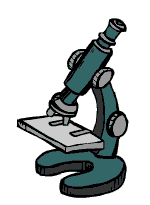HUMAN CELLULAR AGING
EXTENDING YOUR LEGACY

What is Cellular Aging?
Cellular Aging, also known as senescence, is the deterioration of an organism after maturation. An organism can deteriorate at the rate of which it is affected by its environmental factors. Some environmental factors may include a poor diet, excess radiation, and stress. One of the most common factor found to be shortening lives
was stress, which is found among all
Americans at some point in their lives.
i

Different parts of the body may age at different rates. Two organisms of the same species can age at different rates due to the biological concept of it being different. Aging can be considered a phenomenon by which normal diploid cells cease to divide. If senescence begins to occur consistently, the telomere on the end of the chromosomes will begin to shorten while triggering DNA damage.
There are three types of cellular senescence which can be referred to as namely replication senescence, oncogene-induced senescence and DNA damage-induced senescence.

Science suggests that both genetic and environmental factors
contribute to aging and is regulated by biological clocks throughout one lifespan.

Living longer by tweaking genes
Aging
Clearing out old senescent cells has increased the lifespan of mice by 25%. Van Deursen discovered that if cells are blocked from entering into the stage of senescence, the symptoms of old age are able to be avoided. The ability to destroy cells that are even mildly beginning to become senescent can result in the halt of many ailments and health deterioration.
Cancer
Cancer is a group of immortal cells that appear by defects in genes and there is evidence that cellular senescence prevents the expansion of precancerous cells. Defect cells can easily transform into malignant tumors by the inactivation of other genes, yet senescent cells caused these types of tumors to regress.
Why Is It Important?
Human cellular aging is important in society because with this technology humans could be immortal which would totally change the outlook on life. Life is considered a phenomenon by many philosophers, something that is to be enjoyed for as long as you have it. Science added a new concept of living longer by tweaking genes. Cellular senescence exists as a role of normal development, and it popped up during the evolution of humans.

-
1 in 285 children in the U.S. will be diagnosed with cancer by the times they are 20 years old
-
Almost 700 new kids are affected by cancer worldwide every day
-
Every 2 minutes, a child is diagnosed with cancer
-
1 in 5 children diagnosed with cancer in the U.S. will not survive
-
Cancer is the second leading cause of death in children ages 5-14
In many cancers, there is a disturbance in the balance of cell division and cell death. When damage occurs to the DNA, it is rendered useless and apoptosis has evolved as a rapid process to complete eliminate dysfunctional cells. Malignant tumor cells can express pro-apoptosic activators to induce programmed death. Thus removing the mass of cells that are dividing uncontrollably. As early as the 1970's, apoptosis has been linked to the elimination of malignant cells and tumor progression.
Damaged induced senescence is also used as a mechanism to eliminate potentially dangerous cells. If not eliminated, those cells could develop cancer or a tumor which could threaten an individuals life. Cellular senescence has been implicated in aging, tissue repair, and cancer. Apoptosis, a form of programmed cell death much like senescence, has helped in the suppression of many deadly tumors. The activation process is triggered by proteolytic enzymes called caspases which damage the DNA in the nucleus and proteins in the cytoplasm. Many diseases are linked with the birth and death of cells so scientists are trying to figure out a way to modulate apoptosis in order to cure cancer.


Life is broken down by senescence after maturation, which would ultimately lead to mortality but it is triggered by uncapped telomeres which stimulate DNA damage. Telomere shortening can be triggered by many environmental factors such as stress and food diet, which increases the rate of morality.
Alterations to the epigenetic changes are able to make genes more or less active, thus slowing down or speeding up the aging process. Aging is something that is able to be manipulated, this can be done by turning adult cells into an embryonic state.
Learn More
An organism's aging process can be affected with the inability to maintain a stable internal environment. Factors that should be taken into consideration are environmental challenges such as changes in temperature, humidity, and air quality.
Life expectancy has increased due to the elimination of infectious diseases occurring in youth, better hygiene, and the adoption of antibiotics and vaccines. Although life span can be extended, we will never become immortal because death will always be a consequence of aging.
